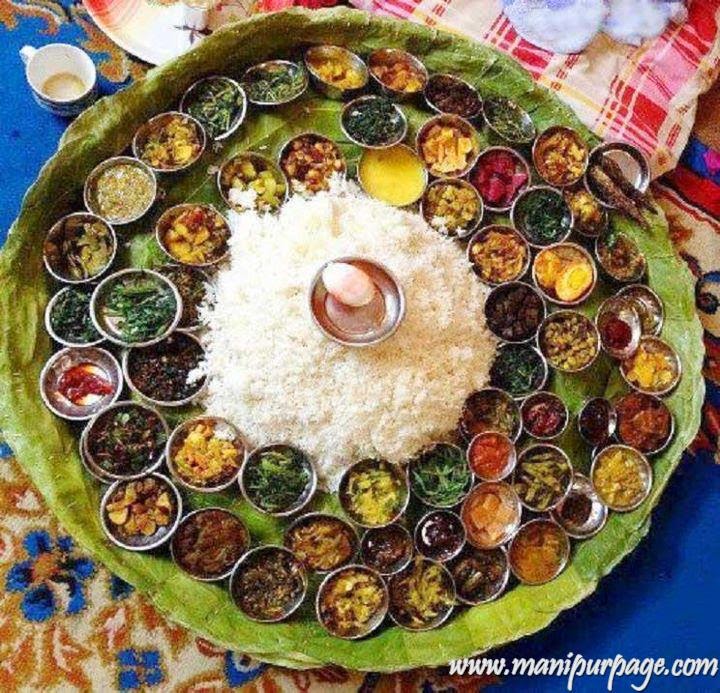If you Google for foods from Manipur you are faced with exotic names you do not recognise: Ngari, Iromba, Chamfoot, Morok! A little further reading reveals what these are: fermented fish and lots of local herbs. Manipuris like their food spicy hot. The staple diet of Manipur consists of rice, large varieties of leafy vegetables (of both aquatic and terrestrial) and fishes. Manipuris typically raise vegetables in a kitchen garden and rear fishes in small ponds around their house. Since the vegetables are either grown at home or obtained from local markets the cuisines are very seasonal, each season having its own special vegetables and preparations. They hardly use any oil and the food is near organic. It should be cause to celebrate only I do not see my husband eating fish with bones or vegetables that seemed simply boiled with herbs. I wish he did as it would be a perfect diet for him. Must try and find out a way out.
It is sad that we do not know anything about local cuisines around our land as these are the ones that are healthy and nutritious. Globalisation has ensured the slow death of local food. An interesting article in a magazine entitled the culture of eating right, unravels the richness of tribal cuisine in India, where over, hold your breath, 1582 food kinds were on display and 972 of them for uncultivated. Organic in its purest form! How silly we look with our limited grocery bag that looks pathetically the same week after week, month after month. The festival was a celebration of traditional food cultures linked to age-old farming practices that not only provide these tribes nutritional security, but also protects and conserves nature’s bounty.
This is real food security, one that has withstood the test of time and is in sharp contrast with the Food security the Government wants to dole out and that is limited to 5 paltry kilos of rice, wheat or millet. As a tribal rightly said: “We don’t need your food security system, the more ration shops you open in our villages, the more you force us to abandon our own food security system so painstakingly built by our forefathers.” I wish law makers understood this, but they are so high on hubris that they want to be God and Nature at the same time. Sadly it does not work that way. By taking away traditions, we are going against nature in a shameless way.
A single traditional plant has multiples uses and no waste. He is is just one example: Kusum koli leaves are used for fodder, its fruits eaten raw, the plant is used as firewood and oil is extracted from the seeds. The seed oil serves as a mosquito repellent and also treats certain skin diseases. So you have food for humans and animals, fuel for cooking and medicine. There are hundreds of such examples. If you read the whole article you will understand what true Food security means. How can 5 kilos of rice replace what the forest gives. It is impossible to view food security without a proper understanding of our traditional food systems and feeling a sense of pride in them. The short cut and thoughtless approach aimed at gaining votes has to be abandoned. The fast food frenzy has to be denounced, the dangers of genetically modified food need to be assessed.
We need to imbibe the wonderful knowledge of tribal traditions and embrace them. 1582 kinds of foods cannot be shunned and cast away. We, and I include myself in the we, are quick to adopt and even champion foods coming from ancient traditions of other lands like quinoa and chia seeds and shitake mushrooms and pay exorbitant prices for them but unwilling to look at the foods of our own ancient traditions. What if I were to tell you that Kanglayen, a mushroom found in Manipur is shitake mushroom. I am sure that there is a cornucopia of super foods waiting to be discovered and I intend to do so.
What can be more organic than a meal of vegetables grown in your backyard and fish from your pond! And look at the picture above, each bowl is a different food. I wonder if the best 5* Michelin chef could conjure such a plate.


